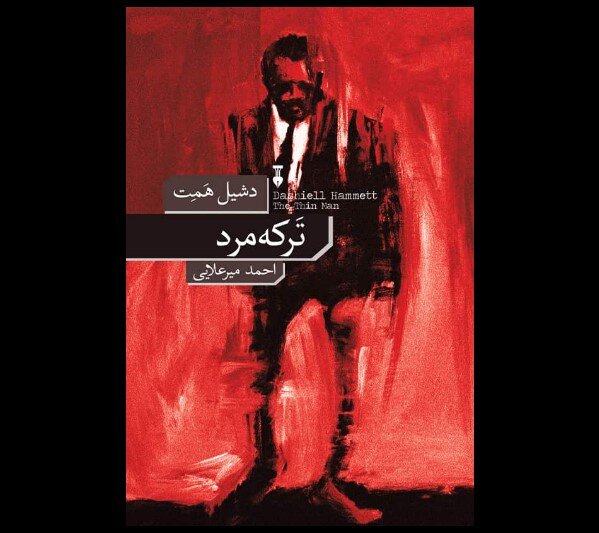“The Thin Man” at Iranian bookstores

TEHRAN – “The Thin Man” by American writer Samuel Dashiell Hammett has been published in Persian by Now Publications in Tehran.
Ahmad Miralai is the translator of the book first released in 1933.
"The Thin Man" is a classic detective novel. Its popularity led to a successful film series featuring the iconic characters Nick and Nora Charles, with Hammett himself hired to write the screenplays for the first two films.
Set during the Christmas season of 1932 in New York City, amid the waning days of Prohibition, the novel introduces readers to Nick Charles, a retired private detective, and his glamorous wife, Nora. Nick, who is of Greek descent, now spends much of his time managing his late father-in-law’s businesses in San Francisco, often indulging in heavy drinking. Their peaceful lives are disrupted when Nick visits a speakeasy in New York and encounters Dorothy Wynant, the grown daughter of Clyde Wynant, an eccentric inventor. Dorothy claims she is trying to reconnect with her elusive father, whom she has not seen since her parents' divorce.
Soon after, a murder shocks the city: Julia Wolf, Wynant’s secretary and former mistress, is found shot dead. The investigation is led by Lieutenant John Guild, who suspects Julia’s new lover, gangster Shep Morelli, of the crime. Morelli, desperate to clear his name, breaks into Nick’s hotel room to protest his innocence but is quickly subdued by the police, thanks to Nick’s quick thinking. Recognized from past cases, Nick is reluctant but eventually drawn into the investigation, especially when his old army friend Herbert Macaulay, Wynant’s attorney, asks for help in locating the missing inventor, who is rumored to be working on a groundbreaking invention in secret.
As the story unfolds, Nick digs deeper into the lives of the characters involved, visiting speakeasies and questioning suspects like Arthur Nunheim, a former burglar and police informant. The plot thickens when Nunheim is found murdered with the same gun used to kill Julia Wolf. New suspects emerge, including Christian Jorgenson, who is later revealed to be Victor Rosewater, Wynant’s former associate with a vendetta against him. Meanwhile, Mimi Jorgenson, Wynant’s ex-wife, arrives from abroad seeking more money, and her son Gilbert produces a letter from Wynant, hinting at financial dealings.
The climax reveals that Wynant’s body was hidden beneath a cemented floor, disguised to appear as a thin man’s remains. Nick deduces that Clyde Wynant was murdered by Herbert Macaulay, who had been swindling him and was responsible for multiple murders, including those of Julia Wolf and Nunheim. When Mimi realizes she’s been deceived and that Macaulay has been orchestrating the crimes, Nick intervenes, knocking him out and turning him over to the police.
The novel’s characters each adding depth to this intricate tale. The narrative was initially conceived as a more serious, San Francisco-based story, but Hammett shifted to a comedic, New York setting, introducing a wealthy amateur detective, which changed the tone of the novel.
The social context of "The Thin Man" is significant; its opening line references a speakeasy, evoking the dishonesty and hypocrisy of the Prohibition era. Poet W.H. Auden famously linked the novel’s depiction of a corrupt society to the political unrest of the late 1930s. Despite its success and cultural impact, Hammett never wrote another novel after "The Thin Man," possibly due to health issues and a desire to pursue different projects, as noted by his contemporary, Lillian Hellman.
The novel’s success extended into Hollywood, where MGM quickly optioned the film rights, releasing a film adaptation mere months after the book’s publication. The film’s popularity led to a series of sequels and a long-running television series, cementing "The Thin Man" as a cornerstone of American detective fiction. Hammett’s work remains influential, blending sharp wit, complex characters, and a keen sense of social commentary.
SAB/
